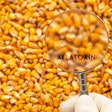
Mycotoxins are a constant concern for domestic and international grain trade, making it important to have a quick, reliable test available to detect the potentially harmful chemicals.
As part of its mission to facilitate the marketing of U.S. grain, the United States Department of Agriculture’s (USDA) Grain Inspection, Packers & Stockyards Administration (GIPSA) certifies that rapid test kits designed to detect mycotoxins effectively evaluate the presence of aflatoxin, deoxynivalenol, fumonisin, ochratoxin and zearalenone. Functional kits help ensure smooth trade and consistent, fast test results no matter the location or time.
In a December interview with WATT Global Media, Dr. Tim Norden, chief scientist at GIPSA’s Federal Grain Inspection Service Technology and Science Division, spoke about how the agency certifies test kits.
Norden said rapid test kit manufacturers send in a kit and its instructions. GIPSA performs its own tests to verify the test works and that it yields accurate, precise results. In a busy year, 30 to 40 test kits will be submitted for certification.
Quick, dependable test kits
Myoctoxins are a poisonous metabolite of molds and fungi that can affect crops and livestock. The presence of toxins and the molds that produce them can influence the value of grain and how it is marketed. The grain industry relies on quick, dependable GIPSA-certified test kits.
GIPSA uses three main certification criteria: length of test, stability, and accuracy and precision.
The test kits are used at every point in the supply chain and therefore, Norden said, a test must be fast. That way customers can get their results as grain is being loaded, unloaded or prepared for transportation. The target time for a test is less than 10 minutes, and any test that takes more than 30 minutes is not accepted.
Test kits must also have a robust shelf life and operate under hot and cold conditions. If electronics are part of the test, the components must withstand interference. In the past, Norden said, radar used on ships would interfere with the testing, but that’s now greatly diminished.
Accuracy is the most important factor. If the test is not accurate, its users cannot depend on its results. Norden said GIPSA certification is important for the test kit manufacturers, who say the certification gives their customers more confidence in the product.
If GIPSA certifies a test kit, it can be used for official grain inspection. That means agencies can purchase the kit and use it for official grain inspection activities. After issuance, a certification is good for three years. Upon expiration, the same test must be resubmitted for another round of certification testing. GIPSA maintains a record of all approved test kits on its website.
The certification is important, Norden said, because it allows GIPSA to ensure that every time grain is tested in any location around the country, the answer is the same.


















